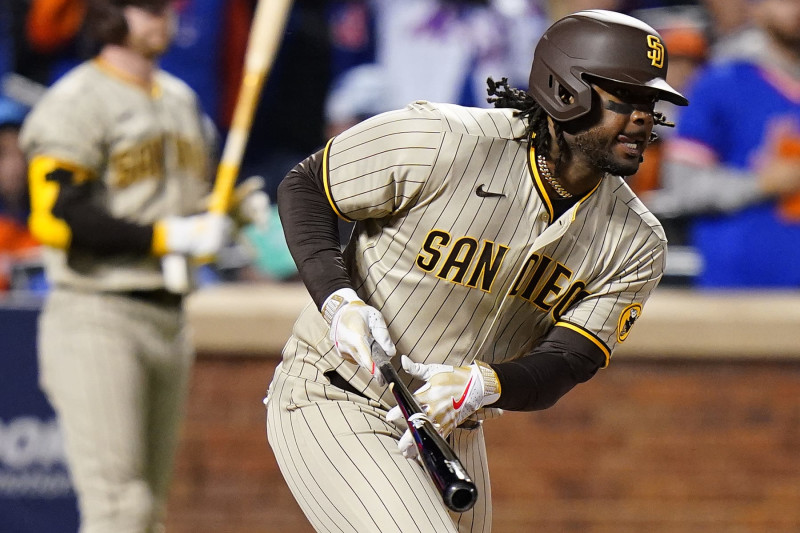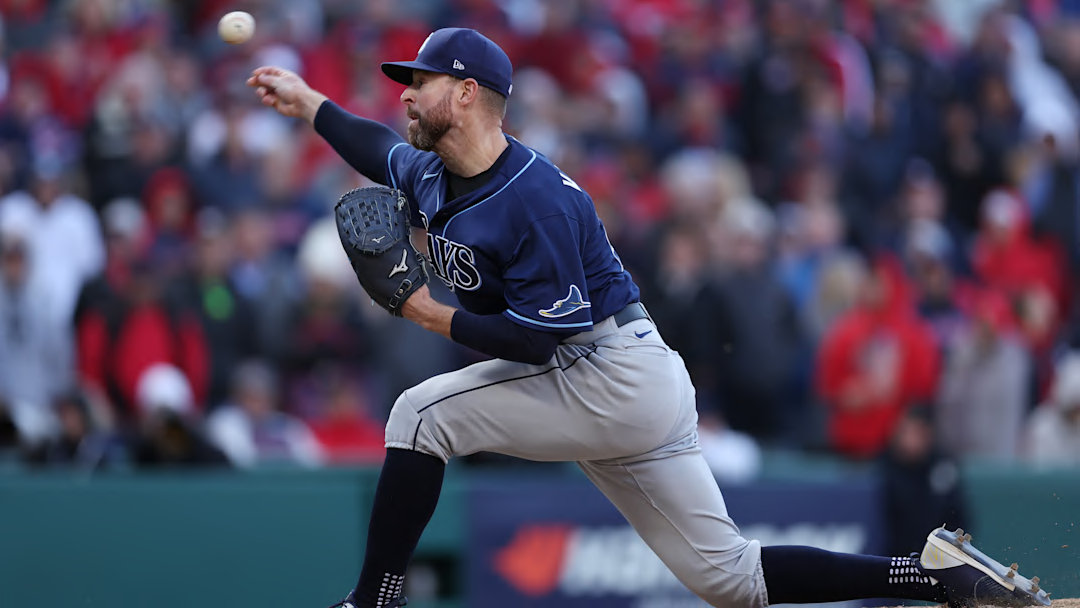Amed Rosario’s future with Guardians: With top shortstops off the board, is a trade possible?
Aug 24, 2022; San Diego, California, USA; Cleveland Guardians shortstop Amed Rosario (1) throws to second base late on a single hit by San Diego Padres shortstop Ha-Seong Kim (not pictured) during the seventh inning at Petco Park. Mandatory Credit: Orlando Ramirez-USA TODAY Sports
By Zack Meisel
CLEVELAND — Teams that needed a shortstop this winter had two options.
1. Spend a nine-figure sum to land one of the four star free agents who play the position.
2. Sign someone far, far inferior.
Well, three options.
3. Wait for one of those stars to escape his new team via an iffy medical exam and then scoop him up with a 10 percent discount.
OK, there’s actually a fourth option: a trade.
The Guardians don’t need a shortstop. They employ Amed Rosario, and several other younger, less experienced candidates. Andrés Giménez is a natural shortstop, too, and he has played the position in the Venezuelan Winter League in recent weeks. Gabriel Arias and Tyler Freeman made their major-league debuts in 2022, and Brayan Rocchio might not be far behind.
All of that depth sparks the same question that surfaced over the summer: Does it make any sense for the Guardians to trade Rosario and tap into their middle-infield surplus?
The question isn’t spurred by Cleveland’s eagerness to deal him. He’s a productive major leaguer on a team with postseason aspirations, after all. It’s spurred more, at the moment, by teams that missed out on those four prized free-agent shortstops searching far and wide for a better solution than those who remain unsigned. (Along the same lines, The Athletic’s Ken Rosenthal reported teams have called the Orioles about shortstop Jorge Mateo.)
The Guardians front office will listen to any proposal floated their way, but it’s difficult to envision something logical involving Rosario taking place before Opening Day. Cleveland’s conundrum is the same as it was in July: Any trade return would need to at least offset the risk of receiving less output at the position from either Arias or Freeman. Remember, the Guardians weren’t comfortable simply handing rookie Bo Naylor the keys at catcher, in part because they’re gunning for a deep playoff run and don’t want to place such a burden on a player with no track record.
Amed Rosario is under team control through next season. (Ken Blaze / USA Today)
Rosario was once a top-five prospect in the sport as he rose through the Mets’ ranks. The past two years, he has produced nearly identical numbers.
2021: .282/.321/.409 slash line, 25 doubles, 11 home runs, 13 stolen bases
2022: .283/.312/.403 slash line, 26 doubles, 11 home runs, 18 stolen bases
Unsurprisingly, FanGraphs’ Steamer projection system forecasts a similar line for him in 2023. Here’s how Rosario compares to the youngsters.
Rosario: .277/.314/.413 slash line
Arias: .244/.304/.402 slash line
Freeman: .273/.332/.385 slash line
As for the ZiPS projection system …
Rosario: .276/.309/.400 slash line
Arias: .239/.300/.377 slash line
Freeman: .263/.328/.349 slash line
The bottom line: The projections indicate there might not be a drastic drop-off in output (and, defensively, there could be an upgrade), but there’s still a lot of inherent risk because Rosario is a pretty safe bet given his consistent track record, whereas the outcomes for the rookies could be all over the map because of the unknown.
What would a trade even look like? Is Rosario more valuable to Cleveland or to another team?
Only a contender would exhibit interest because Rosario can become a free agent after the 2023 season. The Braves, Red Sox, Twins, Dodgers and Angels could all be fits, to some degree. Obviously, a trade with the Twins wouldn’t happen given the AL Central ties; The Athletic’s Dan Hayes has suggested the club is content to proceed with Kyle Farmer and, once he’s healed from ACL surgery, Royce Lewis. Our Red Sox writers, Jen McCaffrey and Chad Jennings, indicated Boston had discussed Rosario internally earlier this winter, but not so much recently. Pinpointing a sufficient return proved challenging as well. Our Braves writer, Dave O’Brien, said Rosario would fit well in Atlanta, but he was skeptical that the Braves would offer much in return and wondered if Atlanta would be comfortable paying the $9 million or so Rosario is set to earn via arbitration.
The other side of a potential trade is the reason this is a long shot, and why the Guardians opted to keep Rosario over the summer. With Rosario’s limited control, no team is going to overwhelm them with an offer they can’t refuse. Dealing Rosario for a prospect only adds risk to the team’s 2023 outlook. The only somewhat sensible scenario would be to flip Rosario for another useful major leaguer. Think of a couple of moves the Mariners executed this winter: They dealt reliever Erik Swanson (and a minor-league pitcher) for outfielder Teoscar Hernández and swapped outfielder Jesse Winker for second baseman Kolten Wong.
The Guardians held these same debates over the summer. From a long-term perspective, there were benefits to trading Rosario since he wasn’t the shortstop of the future. Had the club been on the outside looking in at the playoff picture, it would have been more motivated to do so, much to José Ramírez’s dismay. But the Guardians opted to hang onto him, and it’s important not to just dismiss the vital role Rosario played in the lineup and the clubhouse. He and Ramírez captained the club’s contact-and-speed movement.
There’s one other factor to note: The most likely course of action is letting Rosario play out his final year of team control. The Guardians could present him with a qualifying offer at the end of the year. They would net a draft pick if he declines it and enters the free-agent market in an offseason in which there won’t be four shortstops ready to collect a combined $1.1 billion. His primary competition would be Isiah Kiner-Falefa, a 37-year-old Brandon Crawford and maybe Paul DeJong. If the Guardians falter out of the gate and are staring up at the White Sox in the standings in July, they could revisit their trade options then, too.
"I've suffered a great many tragedies in my life....most of them never happened". Mark Twain




